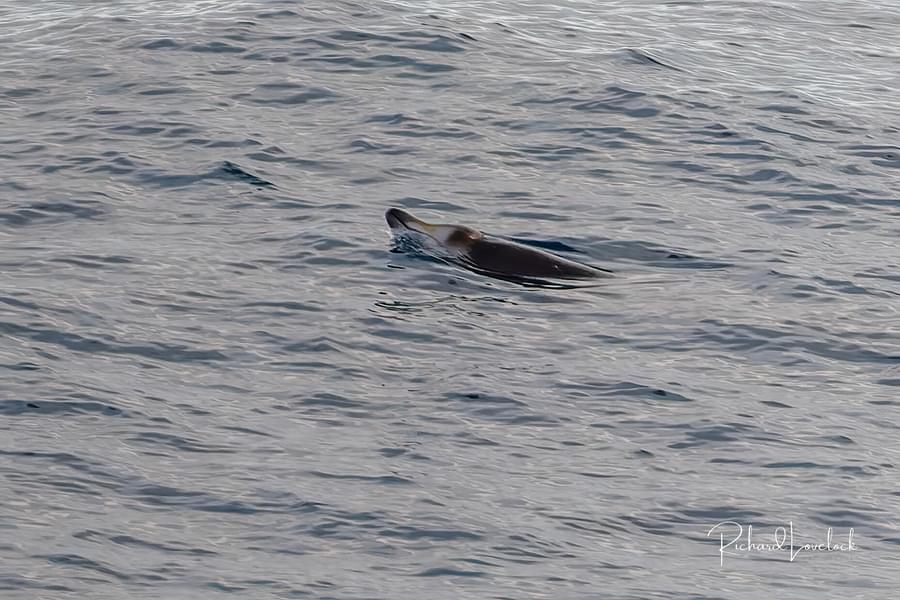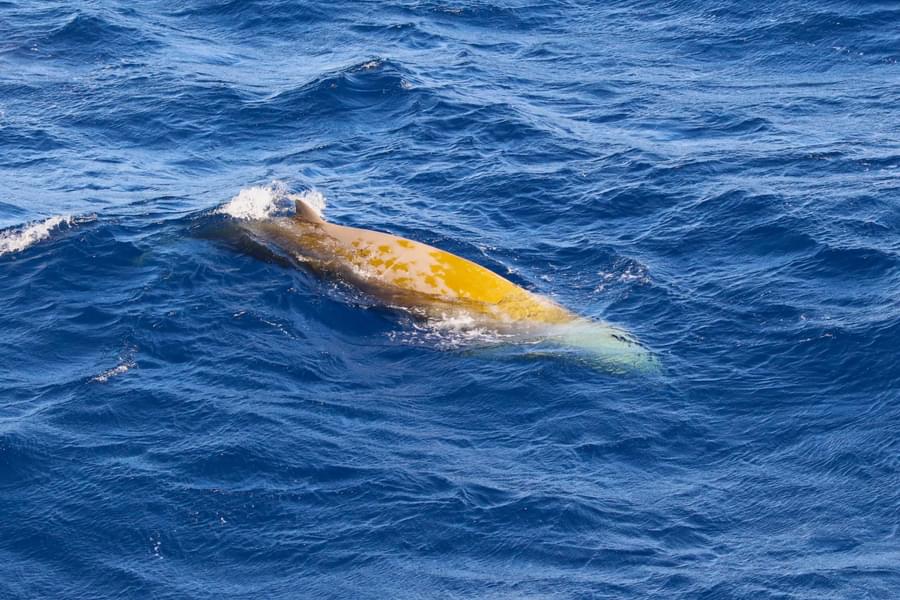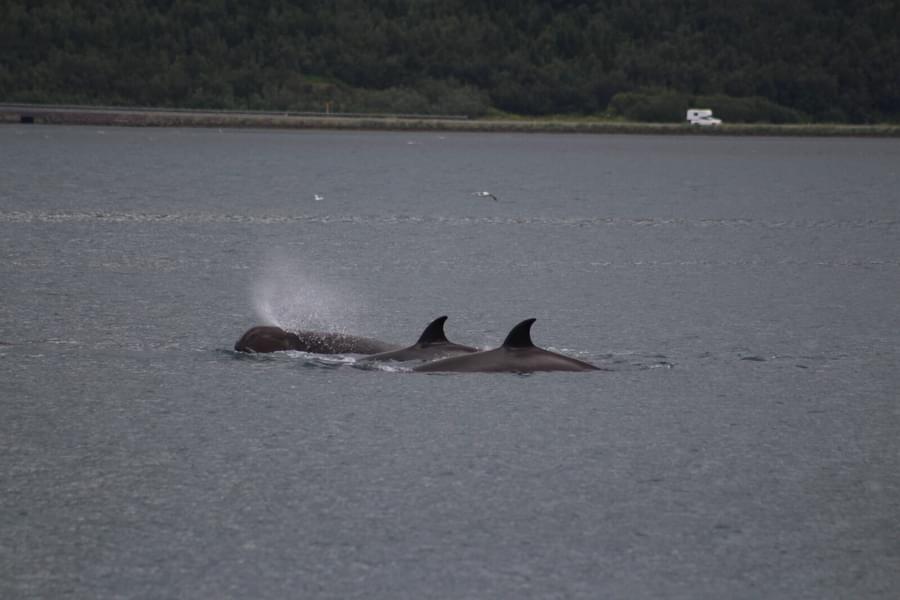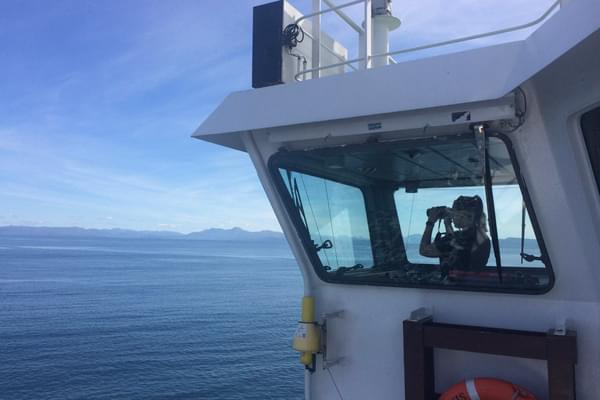World Whale Day, celebrated annually on the third Sunday of February, is a global event dedicated to raising awareness about whales and the conservation challenges they face. It originally began in Hawaii to honour the region’s native Humpback whales and has since grown into an internationally recognised day. This day not only highlights the importance of whale conservation but also encourages people around the world to take action to protect these magnificent creatures. To celebrate World Whale Day, let’s dive into the world of an especially elusive and fascinating group of whales that don’t get enough attention: beaked whales!

Beaked whales (family Ziphiidae), named due to their dolphin-like beaks, are a mysterious and globally distributed family of toothed whales, with around 24 species currently known. As research progresses, it’s likely that more species will be discovered — some, like Sato’s beaked whale (Berardius minimus), which was only recognised as a distinct species in 2019, and Ramari’s beaked whale (Mesoplodon eueu), described in 2021, have only recently been identified. Beaked whales are an incredibly diverse group, ranging in size from the Pygmy beaked whale (Mesoplodon peruvianus) at around 3.9 metres to the much larger Baird’s beaked whale (Berardius bairdii) which can exceed 10 metres, and they display a wide variety of striking colourations and markings.
Although different species of beaked whale are found in every ocean, their preference for deep, offshore waters, and their elusive nature make them extremely challenging to study. As a result, they remain the most poorly understood group of cetaceans, with research primarily concentrated on just a few species—and for others, we know next to nothing about them! Some species, like the spade-toothed beaked whale (Mesoplodon traversii), have never been seen alive at sea—we only know of their existence because stranded animals have washed ashore. Indeed, a lot of our current knowledge has been derived from studies on stranded animals. This highlights just how much remains unknown about these deep-sea divers, which is why continued research is so important to uncover more about their behaviour, habitat use, and the threats they face.
Beaked whales are known for their record-breaking deep diving capabilities, performing deeper and longer foraging dives than any other mammal. The goose-beaked whale (Ziphius cavirostris) holds the record for any breath-holding diving mammal with one individual holding its breath for an astonishing 222 minutes on a single dive! These masters of the deep can descend up to 3,000 metres, using echolocation to track down squid and fish before expertly suction-feeding on their prey.

Although beaked whales belong to the toothed whale family, the majority of female beaked whales are actually toothless! In many species, only the males develop a single pair of teeth in the lower jaw— and in some cases, their teeth are truly extraordinary. Blainville’s beaked whales (Mesoplodon densirostris) have triangular-shaped teeth that are angled forward at around 45° and erupt from the gums. Equally striking is the strap-toothed beaked whale (Mesoplodon layardii), named for its remarkable teeth that curve over its rostrum almost like a muzzle—so much so that adult males can’t open their mouths fully! It’s thought that these unusual teeth play a role in male competition, with males using their teeth to rake and challenge each other for mates. In fact, adults of species like the goose-beaked whale bear extensive scarring from tooth rakes inflicted by other whales, suggesting underwater skirmishes where males compete for access to breeding females.
Research has shown that beaked whales are particularly sensitive to the impacts of military sonar compared to other cetaceans. Mid-frequency active sonar (MFAS), commonly used in naval training exercises, has been linked to a number of mass stranding events. Several beaked whale species show strong avoidance responses to sonar exposure, and it is thought if they ascend too rapidly from deep dives as a response, they can develop decompression sickness (or “the bends”), a potentially fatal condition. The growing body of evidence linking sonar to strandings underscores the urgent need for further research and mitigation measures to protect beaked whales from human-induced threats.
The full extent to which sonar disturbance impacts beaked whale populations remains poorly understood, as we lack an understanding of so many basic fundamental aspects of their behaviour and biology. If individuals consistently lose foraging opportunities due to sonar avoidance, this could lead to reduced energetic intake, potentially affecting their overall fitness and, over time, population health. Beaked whales already expend significant time and energy on each dive due to their extreme diving behaviour, which could make it difficult to offset additional energetic costs imposed by repeated sonar avoidance. Additionally, it remains unknown to what extent the loss of individual or multiple animals through sonar-associated strandings could impact a population, but it has been suggested that particularly for small, geographically isolated populations, such losses could disrupt population dynamics.
This is why ORCA’s population monitoring efforts are so essential. By collecting sightings data on beaked whales (and other cetaceans), we are helping to build a clearer picture of their habitat use, behaviour, and distribution—crucial information needed to better protect them. Identifying key habitats is particularly important in mitigating the impacts of human activity on these elusive whales. Our data has already contributed to research papers indicating likely year-round presence of beaked whales in the Bay of Biscay, suggesting that this region may be an important habitat for them (read more here).


You can start your citizen science journey today with ORCA by taking part in our 'Introduction to Whale and Dolphin Identification' course! You can then progress on to our live Marine Mammal Surveyor Courses, which take place in October and November - and you could be out on the UK ferry network in 2025, surveying for whales and dolphins!

